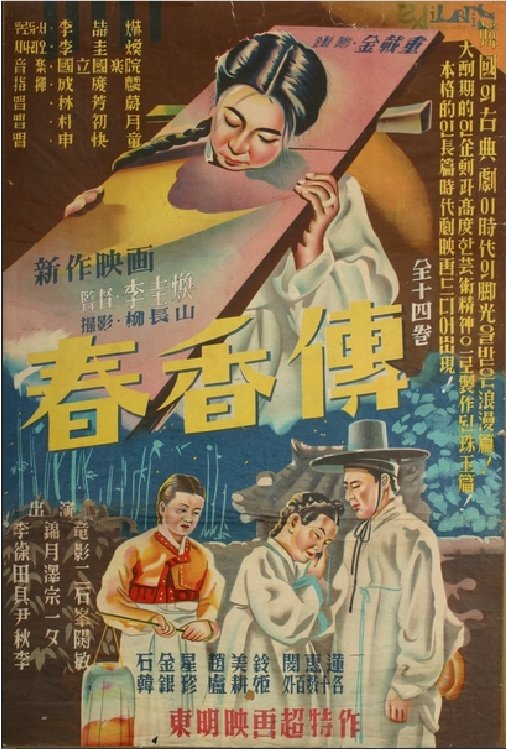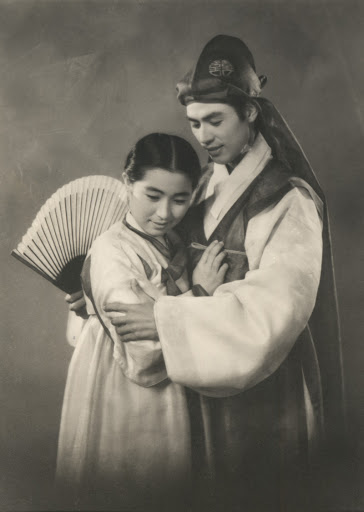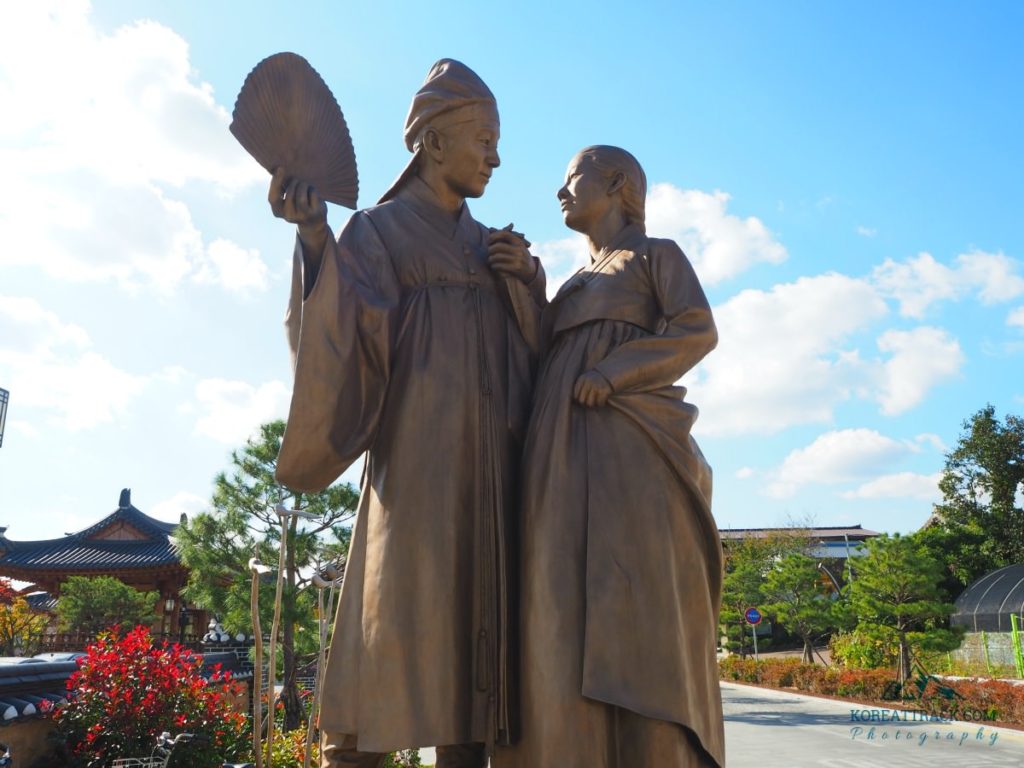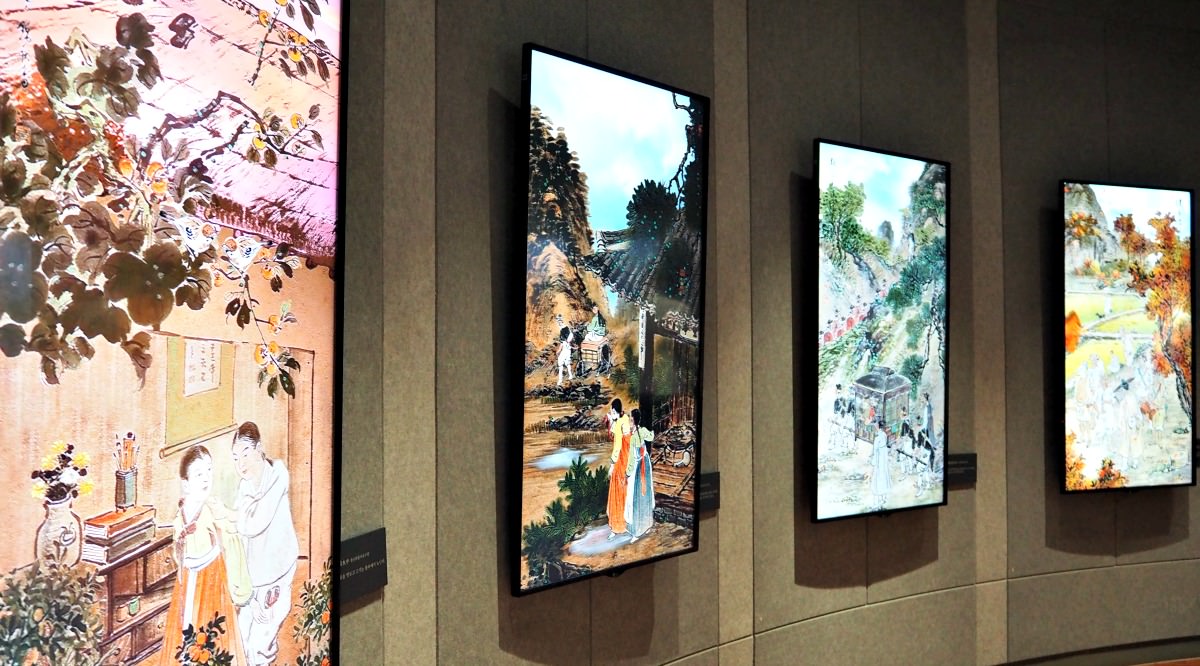The Traditional “Fragrance of Spring”
Arranged by David Shaffer.
It is April, and it is spring in Korea. In this installment of Blast from the Past, we bring you Korea’s most beloved traditional love story, Chunhyang (춘향, literally, “Spring Fragrance”). What follows is a compilation of two earlier articles that appeared in the Gwangju News fourteen years ago but are as relevant today as they were then: “Spring Fragrance” by Sandra Wyrwal, which appeared in our April 2006 issue (para. 1 & last 3) and “The Story of Chunhyang” by Prof. Shin Sang-soon (1922–2011), which appeared in the December 2006 issue of the Gwangju News. The city of Namwon, where the story is set, features a Chunhyang theme park replete with the setting’s pavilion, statues, museum, and even a shrine to Chunhyang. While the folktale is fiction, it very much represents the ethos of the time. — Ed.
It is April, and we are in the middle of spring. If you take a walk through one’s of Korea’s beautiful parks, you are sure to smell the flowers. Here in Korea, the term “spring fragrance” (chun-hyang, 춘향 / 春香) has a very special meaning; it is the name of a female figure in one of Korea’s most cherished folktales. Chunhyang is not only a Joseon-era folktale, it has also been adapted to operas, pansori, plays, and movies, and you can find it in almost every Korean folktale collection. It is also a part of the Jeolla (Honam) area culture: The story is set in Namwon, in what is now North Jeolla Province.

The original Story of Chunhyang depicts the romance of two young lovers, both aged 16. The writer is unknown, and the story is presumed to have originated during the reign of Yeongjo, (1724–1775), the 21st monarch of the
Joseon Dynasty (1392–1910). The national creed of the times was Confucianism. It stressed the so-called three bonds and the five moral rules in human relations.It had a strict social stratification made up of four classes: the scholars, farmers, artisans, and tradesmen. The scholar
class was monopolized by the yangban (양반, literati). The gisaeng (기생, geisha) belonged to the cheonmin (천민, “vulgar commoners”) class, the lowborn class that included slaves, entertainers, butchers, and shamans. They all received their status through heredity. The gisaeng were
female entertainers engaged in singing, dancing, playing musical instruments, and a variety of other activities, both official and private. They were trained in special gisaeng schools, and some even attained high literary fame. (Such social stratification was abolished in 1894 as a result of
the Gabo Reforms.)
The two lovers involved in this story are often referred to as Korea’s Romeo and Juliet. But unlike Romeo and Juliet, this story has a melodramatic happy-ending. The love story begins at a chance meeting of Yi Mongryong (aka Yi Doryung), the son of a local magistrate, and Seong Chunhyang, the daughter of a retired gisaeng. The scene of their first encounter was at Gwanghallu in Namwon (Jeollabuk-do), a scenic pavilion surrounded by a lotus pond. Mongryong, the hero, fell in love with Chunhyang, the heroine, at first sight, just like Romeo and Juliet. However, the encounter of the young lovers had a tragic element at the beginning of the story in that they came from polar-opposite classes, similar to Romeo and Juliet, who came from feuding families. And like Romeo and Juliet, they decided to marry in secret.

Their happy days continued off and on until Mongryong had to leave Namwon to accompany his father, who was transferred to Seoul. Being the son of a magistrate, Mongryong pledged that he would study hard in Seoul to pass the gwageo, a civil service exam, and return to fetch his young bride.
In Seoul the lovesick young Mongryong was constantly tormented by the image of his beautiful bride and had many sleepless nights. He lost his appetite and became bedridden with illness, whereby two years were wasted. Remembering his firm pledge to his lovely bride, he made
up his mind anew to study in a desperate effort to pass the civil service exam. The lovelorn young bride during those two years was tormented by the newly arrived magistrate of Namwon. Upon arriving at his new post,
the magistrate proclaimed orders to summon all the gisaeng under his jurisdiction, but none could satisfy him. Someone suggested young Seong Chunhyang. He immediately sent for her. He was stunned by Chunhyang’s beauty but accused her of not responding promptly to his summons. She countered by saying that she was no longer a gisaeng since she was married to a yangban son. The magistrate discounted this as nonsense. At that time, a marriage crossing social classes was taboo. The magistrate continued to charm Chunhyang with honeyed words at first, but then threatened to ruin her life when confronted by her adamant chastity to her husband.
Once she boldly asked the magistrate, in front of numerous officials, if he had not learned the precept that a loyal subject never serves two masters, nor a faithful wife two husbands. He was beside himself with indignation and ordered Chunhyang to be tied to the torture board and given resounding lashes across her back. Later she was put into prison where she languished for a lengthy time.
Meanwhile, after intensive study, Mongryong passed the civil service exam with highest distinction and immediately became the king’s favorite. He chose the post of an undercover emissary of the king among other
prestigious positions, hoping to meet his bride as soon as possible. His job was to right injustices instigated by local administrators. He disguised himself as a beggar clad in rags and went on his journey outside the capital. On his mission, he heard of his wife’s distress. He rushed to her home, but his mother-in-law did not recognize him in his rags.

When she realized who he was, she heaved a deep sigh and lamented her daughter’s plight, pounding the earth with her fists. Coincidentally, the following day was the magistrate’s birthday, and there was to be a banquet
where Chunhyang was to be dragged out for her final questioning. In the midst of the banquet, a strange beggar presented himself asking for food.
Attendants tried to chase him away, but he resisted adamantly demanding a sheet of paper, ink, and a brush. He composed a poem in Chinese characters reading: “The wine in the golden cups is the blood of the people. The
tasty morsels are made of the people’s sweat. The candles drip with the people’s tears, and music drowns the people’s moans.”
The scholarly officials in attendance immediately got the message, but the magistrate who was engrossed in self-absorption did not. Chunhyang was dragged out of the prison to be tried at the court without knowing of
Mongryong’s presence. The “beggar” threw off his rags, revealing himself as the king’s emissary and ordered the arrest of the magistrate. With this, the story ends happily. This story with its happy ending shows how true love should be and that love is not squelched by problems, different social positions, or distance.
The main characters are like stereotypes: the rich, highly educated, handsome hero and the poor, intelligent, beautiful heroine. What a couple! Of course, they are both in love and faithful, so they can hold fast against all
obstacles. Interesting is that Chunhyang is the person with more power even though it is a man who rescues her. She is independent, maybe not in her love relationship but in her faith, and that is what gives this story such popularity.
It is very idealistic, and this is exactly the magic of folktales and fairy tales. We like to hear about perfect couples even if we know that their story is too good to be true. And so few stories show us life with a happy ending.
A folktale about a quarreling couple might not be so popular as a tale about true love. People like the romantic, and they like it even more when tragedy is involved. Of course, Romeo and Juliet is one of the most romantic and
tragic love stories that we all know. It is not a folktale, but even Shakespeare had his sources. And in this case, one theme is the legend of Pyramus and Thisbe by Ovid (b. 43 B.C.), a Roman poet, who penned their story. So the tale is much older…

In Babylon, Pyramus and Thisbe were lovers, but their families lived in enmity, so the couple could not live together. One day, they decided to run away. Thisbe was the first to arrive at the meeting point, a mulberry bush. Suddenly, she saw a lion and was very scared, so she hid in a cave not far away. As Pyramus arrived, he saw Thisbe’s footprints and the lion, and there was blood everywhere. Pyramus also found her cloak, his gift to her.
He thought his only love had died, so he took his sword, Thisbe’s gift to him, and killed himself. At this moment, Thisbe emerged from the cave and found her lover dying. She took his sword and died with him. In memory of
this couple, their love, and the misunderstanding, the mulberry bush colored its berries red from their former white.
One can see Pyramus and Thisbe as the “grandparents” of Romeo and Juliet. The sad end to this story is a very important part of literature around the world today. You can find the theme of forbidden love in a multitude of
movies and TV dramas. Chunhyang and Yi Mongryong, in contrast, can be happy that their storyteller let them live, since it seems to be a rule that when one dies, the partner has to follow as proof of their true love. This
is very idealistic, but people do not want to hear about ordinary life, as that is the mundane that they experience every day.
Interestingly, in these love stories, there are always misunderstandings that can bring the tale to either a happy or a tragic ending. As such, these folktales not only show us how a perfect love could end, they also show that faith in oneself and communication are the most important elements in solving problems. Sadly, if Yi Mongryong had spoken with his father, or Pyramus and Thisbe with their families in a self-assured way, as Chunhyang spoke to the magistrate, then maybe we would not have such popular tales in our cultures. It is good to see that perfect couples are not so perfectly
perfect after all.







